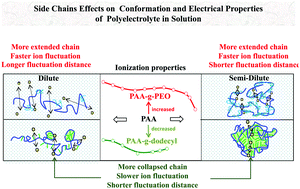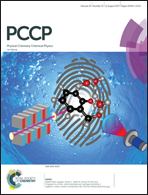How side chains affect conformation and electrical properties of poly(acrylic acid) in solution?
Abstract
To better understand the effect of side chains on the chain conformation and electrical properties of polyelectrolytes, dielectric measurements were carried out on solutions of poly(acrylic acid) (PAA), poly(acrylic acid)-graft-dodecyl (PAA-g-dodecyl), and poly(acrylic acid)-graft-poly(ethylene oxide) (PAA-g-PEO) over a wide concentration range. Double dielectric relaxations with counterion distribution were observed for these polymers and a refined double-layer polarization model was proposed to analyze these, by which valuable information about conformations and interfacial electrokinetic properties was obtained. The transitional concentrations for the overlapping and entanglement of chains were identified from results for the dielectric increment and relaxation time. The concentration dependences of the ratio of effective charges were estimated from conductivity data. It was shown that effective charges on PAA were greatly influenced by PEO or dodecyl side chains, which caused steric hindrance of counterion binding and further dissociation of carboxylic groups or bound counterions. Moreover, a mutual superposition and offsetting effect of PEO and dodecyl side chains was observed. An enhancement in the interpenetration of counterion atmospheres as a result of side chains was also found. In addition, the rate constant ratio and the distance of counterion fluctuations perpendicular to the chains were estimated. It was demonstrated that the effects of side chains on the effective charges or ionization properties of GCP play an important role in their conformation, counterion distribution, and fluctuation.



 Please wait while we load your content...
Please wait while we load your content...